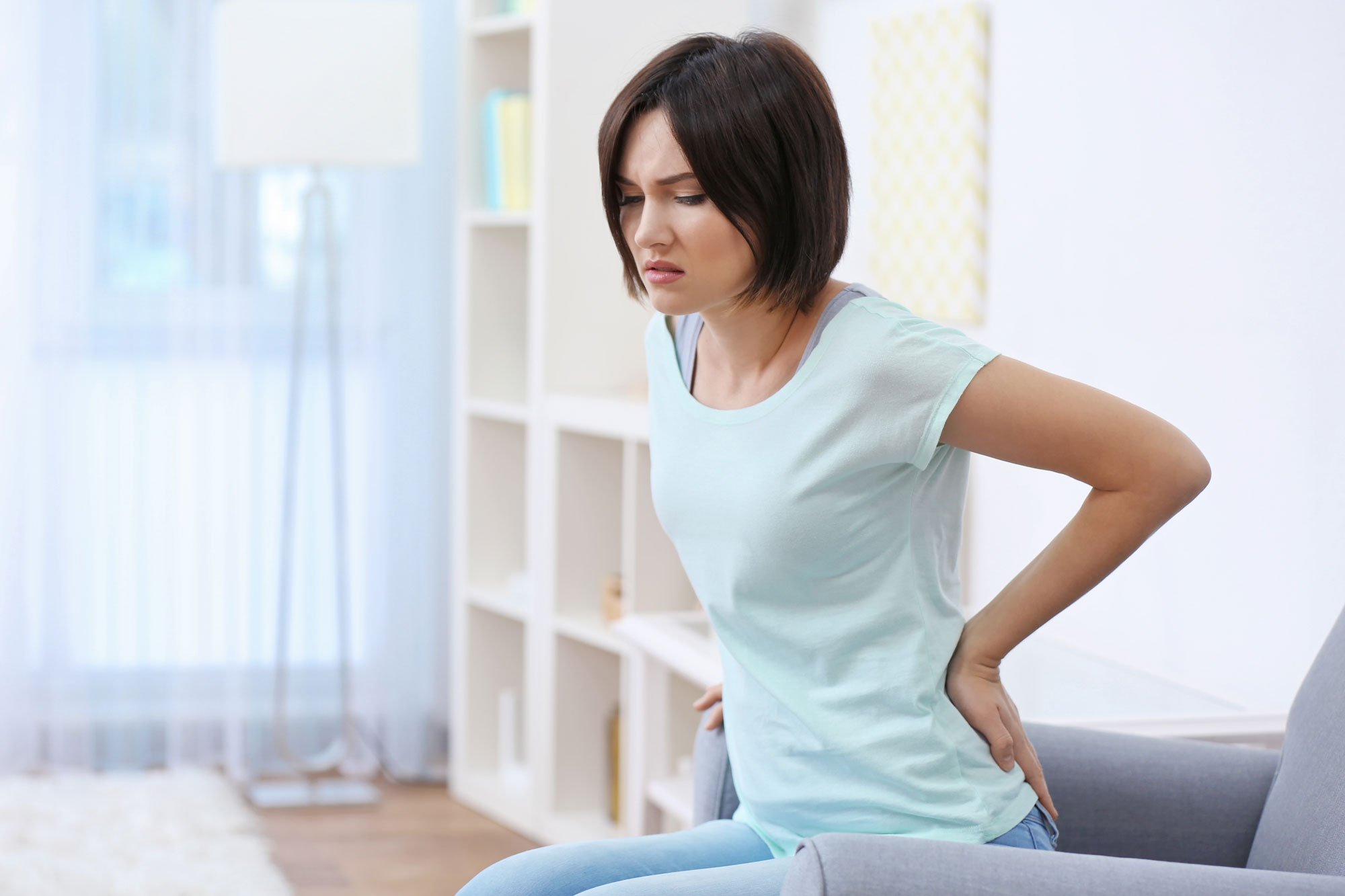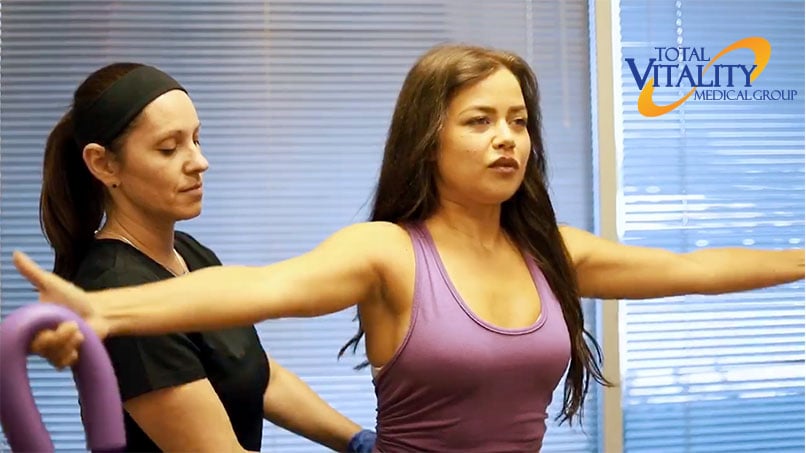Low Back Sprain
Low back pain is a common condition that can be caused by a variety of factors. The two most common causes of low back pain are strains and sprains. Both strains and sprains can occur from everyday activities or from more strenuous activities such as sports. Understanding the difference between a strain and a sprain can help you get the proper diagnosis and treatment for your low back pain.

What is a Strain?
A strain is an injury to a muscle or tendon. A muscle strain occurs when the fibers of the muscle are stretched or torn. A tendon is a tough, rope-like fibrous tissue that connects muscle to bone. A tendon can also be injured, which is called a tendonitis or tendinosis. Common symptoms of a muscle or tendon strain include pain, tenderness, muscle spasms and weakness.
Muscle strains are classified as first degree, second degree or third degree depending on the pain and severity of the injury. First degree strains involve over-stretching of the muscle without tearing of the muscle fibers. Second degree strains involve partial tearing of the muscle fibers with associated bruising. Third degree strains involve complete rupture of the muscle with exposed tissue in some cases. The most common type of third degree strain is an Achilles tendon rupture.
What is a Sprain?
A sprain is an injury to ligaments, which are thick ropes of tough fibrous tissue that connect bone to bone at joints. A ligament can be partially torn (a grade I or II sprain) or completely torn (a grade III sprain). Ligament sprains most commonly occur at the knee but can also occur at other joints such as the vertebrae, ankle, wrist and thumb.
The symptoms of a ligament sprain are similar to those of a muscle strain with pain, tenderness, bruising and swelling being most common. Unlike muscle strains, however, there may also be instability at the joint due to damage to the stabilizing ligaments.
Both muscles and ligaments help to support the spine, spinal cord, weight of the body, bones and tissues along with the abdominal muscles in the front of the body.
Symptoms of a Lower Back Strain
- Localized Pain the Low Back
- Achy or Dull Low Back Pain
- Pain Gets Worse With Movement
- Pain Gets Better During Rest
- Tenderness and Inflammation
- Difficulty Walking and/or Standing
- Stiffness
Diagnosing Sprains and Strains
The diagnosis of low back pain caused by either a strain or sprain will begin with a thorough history and physical examination by your doctor or another healthcare provider. Your doctor will ask about your symptoms and how they started as well as any previous injuries you have had to your back.
Your doctor will also perform a physical examination which may include assessing range of motion, nerve function, and reflexes in your low back as well as monitoring for signs of muscle spasm or weakness. In some cases, your doctor may recommend imaging studies of the spine such as X-rays (x ray), CT scan or MRI, magnetic resonance imaging to further evaluate your low back pain.
Treating Strains and Sprains
Most strains and sprains of the back muscles will heal with conservative treatment which includes rest, ice (or heat), compression and elevation (RICE). It is important to avoid activities that make your symptoms worse during this time period and instead focus on gentle stretching exercises approved by your doctor or other healthcare provider. Bed rest may be recommended in severe cases.
Chiropractic Care To Treat Back Strains
Chiropractic manipulation can be an effective treatment for back strains. During manipulation, the chiropractor applies pressure to the affected joints and muscles in order to relieve pain and promote healing.
In cases of acute onset of pain from a strain, we recommend visiting an emergency chiropractor. They can help ease the immediate pain and get you on a treatment plan to get you back to normal
In addition, chiropractic manipulation can help to improve range of motion and reduce inflammation. As a result, it can be an extremely effective recovery treatment for back strains. Chiropractors also prescribe physical (exercise) therapy, medicines and other treatments for low back strains.
Physical Therapy To Treat Low Back Sprains

The therapist will design a specifically tailored exercise program based on the patient’s individual needs and goals. The program may include strengthening exercises, flexibility exercises, stretching and aerobics. Exercise therapy can help to reduce pain, increase range of motion, and improve function. In most cases, exercise therapy is used in conjunction with other forms of treatment, such as massage therapy or chiropractic care.
Anti-inflammatories To Reduce Pain
Anti-inflammatory drugs are a common treatment for lower back sprains. These drugs help to reduce the inflammation and pain associated with the injury. However, they do not necessarily speed up the healing process. Therefore, it is important to follow the guidance of a healthcare professional when taking these drugs. In some cases, anti-inflammatory drugs may be combined with other back treatments.
Muscle Relaxants for Sprains
Muscle relaxants are a type of medication that is commonly prescribed for back sprains. Muscle relaxants work by inhibiting the transmission of signals between the nerves and the muscles. This action helps to reduce muscle tension and spasms, making it easier for the muscles to heal. Muscle relaxants are typically taken orally, and they are often used in conjunction with other treatments, such as physical therapy. While muscle relaxants are generally safe and effective, they can cause side effects, such as drowsiness and dizziness. Therefore, it is important to take them only as directed by a primary care physician, chiropractor or spine surgeon if you’re experiencing lower back pain.
Once your symptoms have resolved, you can slowly start to increase your activity level with a gradual return to your normal activities as tolerated by your symptoms. Physical therapy may also be recommended during this time period to help you perform exercises safely and properly as well as teach you injury prevention strategies going forward.
How Long Does A Lower Back Strain Last?
It can take up to a month for a low back strain to heal, however most heal within the first week. As it heals, the pain will start to decrease, however flare-ups may happen during the process. Anything lasting over 12 weeks is usually described as chronic back pain.
Treating Lumbar Strain
Low back pain caused by either a strain or sprain around the vertebrae can often be treated effectively with rest, ice, compression and elevation along with gentle stretching exercises approved by your doctor or other healthcare provider.
Depending on the severity of the patients symptoms, physical therapy may also be recommended. It is important to avoid activities that worsen your symptoms during this time period in order to allow for proper healing.
If you have concerns about your low back pain or it does not seem to be improving with conservative treatment measures, talk to your doctor about other possible causes and treatment options available.
